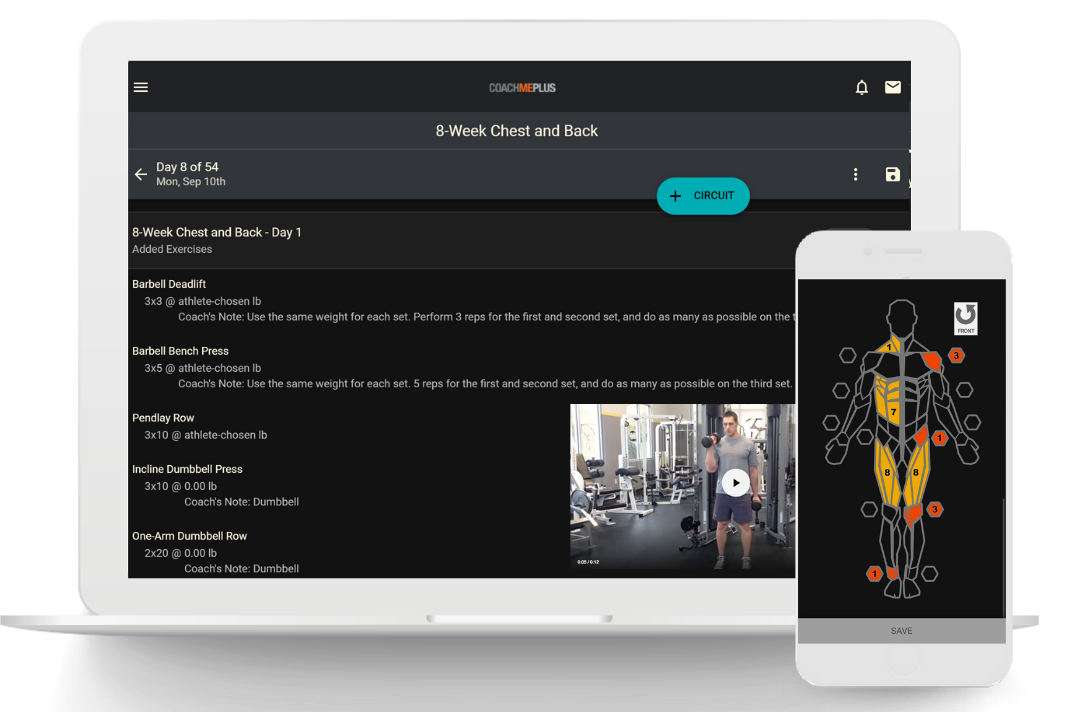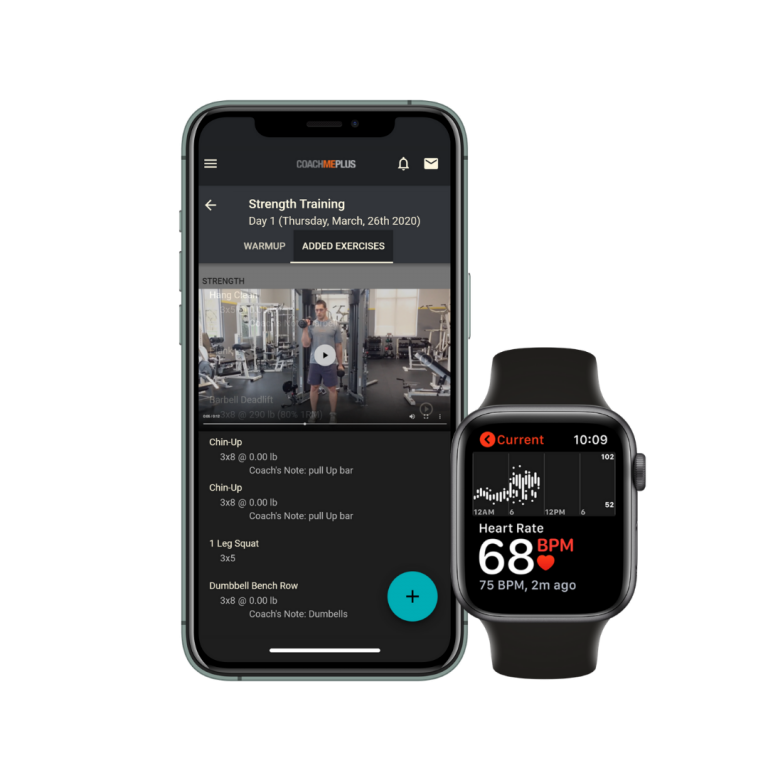
Monitoring foundational and advanced measurements, from body composition all the way to central fatigue, is a standard requirement in all levels of sport. Monitoring is simply tracking change at an appropriate frequency, ranging from daily to annual periods depending on the measurement. External and internal load monitoring fall under the overall biological monitoring umbrella, and other measures can improve performance and reduce injuries. Simple measurements should be standard in the monitoring of sport, as baseline information is of utmost importance to the health and well-being of an athlete. The role of this Academy Guide is to outline the general opportunities in sports monitoring.
Biological vs. Physiological Monitoring
The term “physiological monitoring” is often used to refer to all areas of the human body, creating confusion for professionals in sports performance and sports medicine. All parts of the athlete’s physiology and anatomy that provide proper insight should be monitored, and the interest in muscle performance is one example. Any structural, chemical, or neurological change that is scientifically valid and useful for sport is considered a viable measurement for biological monitoring.
The conventional measures of physiology have always been continuous heart rate, gas exchange, lactate testing with endurance athletes, or the same measures with team sport athletes. Currently, a focus on anaerobic and power testing has created confusion over the exact difference between testing and monitoring, and this is perfectly understandable. Testing usually demands a physical effort that replicates sporting demands, while monitoring tends to be more passive. Monitoring generally doesn’t add more stress or demand, and could be performed during times of training, such as external load monitoring using GPS in team sport practices. In summary, you can use monitoring interchangeably with testing, but the main assumption is that monitoring tends to be more continuous (performed daily) and passive (no athlete effort) in general. Pairing strategic metrics with easily viewable graphs or other visualizations streamlines workflows for many coaches.
Biological monitoring complements athlete testing, and at times a measurement is interchangeable for either category. Some athlete tests—such as field tests of speed, strength, and conditioning—benefit from psychological assessments or internal data to improve the interpretation. Examples of this are blood analysis before conditioning tests or adding sonography to evaluate fascial length of hamstrings before muscle-specific strength assessments.
Effective Measurements for Athlete Monitoring
Athlete monitoring is effective when the right measures and methodologies for collecting data are involved with a training program. In addition to the ideal measurements and tests, the need to repeatedly reassess athlete qualities is important as trend analysis, as auditing intervention strength is a necessary part of monitoring. The areas of monitoring listed below just scratch the surface of what is possible, but the overarching theme is that measurements need to be valid, practical, actionable, and easily maintained throughout a season.
Body Composition
The continual assessment of the body mass and composition of the athlete is part of modern sports monitoring programs. Measuring body composition enables coaches to improve their evaluation of power, speed, and conditioning tests. In addition to improving calculations of performance, body composition is part of health monitoring for female athletes and a way to observe sports nutrition strategies.
Anthropometry
Direct measures of body size and shape are important for planning training and modeling how athletes can improve performance. Measures such as height, girth, and limb length are useful for designing training sessions and constructing long-term development programs.
Cardiopulmonary Function
Cardiovascular and lung functions range from simple resting heart rate to capnography, depending on the experience of those administering the tests. Spirometry, capnography, and cardiac testing all provide ways to improve athlete safety and evaluate the long-term adaptations to training and the reductions from off-season rest.
Biomarker Testing
Evaluating an athlete’s nutrient status or their ability to manage lactate are common reasons to monitor athletes. The use of stress hormone testing with saliva is growing, but for the most part, team and athlete support staff employ blood analysis to screen for deficiencies and for possible health flags. Biomarker testing can be noninvasive, but most tests are considered invasive because they require a blood sample or a process that is inconvenient to the athlete.
Autonomic Nervous System
Improvements in smart devices and the app market opened the door to easier access to the autonomic state of athletes. Fatigue, while not directly connected to the ANS, can be managed when combined with player load and subjective questionnaires. In addition to the autonomic nervous system, teams are also tracking various metrics associated with the central nervous system.
Sleep Monitoring
One of the most coveted metrics is athlete sleep, and the scientific rationale behind supporting the restorative process is indisputable. However, it is questionable how training interacts with sleep, as impaired recovery exists with athletes that do attempt to add more sleep or have more than adequate sleep hygiene. Due to the passive nature of this monitoring, sleep data is practical if the athlete participates. Sleep data can be directly imported into CoachMePlus through questionnaires or through one of our device integrations like Fatigue Science.
Most of the tests above require little to no athlete effort, unlike speed and conditioning tests. Assessments such as jumping are considered physical tests as they require a maximal effort, but their strain on athletes is not significant enough that they factor strongly into training load quantification. Most of the tests are performed daily, weekly, or monthly, but some are just seasonally screened, such as cardiopulmonary tests.
Data Visualizations and Reporting
Sharing data in an effective way requires information to be automatically cleaned and pushed, and reported accurately. Dashboards are one area where teams and staff can work cohesively, and traditional reports with explanatory charts and tables add easy-to-understand summaries of events. Reports provide direct access to the data, as well as written details that add the necessary perspective that visualizations cannot.
Medical data represents a new opportunity to go beyond the common health record and evolve to new frontiers. Due to the complexity of legal challenges and ethical considerations, sports medicine should focus on functional status rather than earlier models. The biographical information outside of hard data is also recommended, as outside the sport, factors unrelated to training often cause or solve problems within the organization.
Dashboards are excellent starting points for decision-making because the information is up-to-date, clear, and weighted based on importance. Other visualizations such as leaderboards are excellent for training and should be considered part of the process, but only for live decision-making. End-of-season reports allow for a behind-the-scenes look at the performance of the athlete, but should incorporate information such as the sporting statistics necessary to show an association or cause and effect.
Management of Roles and Biological Measures of Athletes
Team collaboration improves with synergy of communication and accurate information, thus making monitoring the perfect way to guide staff to better outcomes. Monitoring can add transparency and reduce errors in decision-making, while improving the speed of support. Six vital recommendations for teams and groups are:
1. Sports medicine is best served by being part of the return-to-play process and the diagnosis of injury and illness.
2. Managers should facilitate support and leadership, not add administrative duties to coaches, medical department, team coaches, and other support staff.
3. Strength and conditioning professionals are only as effective as the resources allocated to them. Team coaches need to be encouraged to share both the time and energy of athletes to foster a developmental or supportive program.
4. Sport science roles are best used as a gateway to evidence-based approaches while leaving enough flexibility for staff to apply their methodology. Instead of being trapped in an ivory tower, constant communication is indispensable.
5. Other roles, such as sports psychologist, sports nutritionist, and sports therapist, benefit from access to the right information and the ability to contribute to decision-making, as they see unique areas of an athlete’s program.
6. Athletes themselves are the cornerstone to communication and feedback of the process. Without athlete commitment and strong engagement, the entire process breaks down and fails.
Outside of roles, policies and procedures are necessary to reduce the friction and power struggles common in organizations. Athlete management systems can add organizational solutions to reduce silos or compartmentalization of team roles. A fully integrated program requires transparency, expected responsibilities, and fair ways to review job performance. The usual and related problems experienced by teams are poor communication, ambiguous roles, and the lack of any established best practice for common support of athlete welfare and development.
Data security requires a written policy and adherence to the rules and regulations provided by each organization. Athlete data is often medical in nature; hence, the challenge of teams and leagues looking to provide support while maintaining athlete privacy.

New Challenges and Opportunities with Sport Monitoring
Complications, such as athlete compliance and monitoring literacy, have interfered with progress in performance and sports medicine. New challenges, such as marketing continuity, device and technology validation, and training, are all barriers that stifle growth and evolution. The current climate is science- and data-driven, but dogma and cultural challenges lead to slow adoption. Forecasting advancements is difficult, but the clear expectation is that, as education increases, so will the development of more effective solutions for monitoring athletes properly. The advancements in technology, monitoring research, and applied sciences will likely make monitoring more effective regardless of the current and future obstacles.

Try CoachMePlus Free Today
CoachMePlus is a comprehensive solution for any training environment, ranging from scholastic level to pros, and including both military and private facilities.

Recent Comments